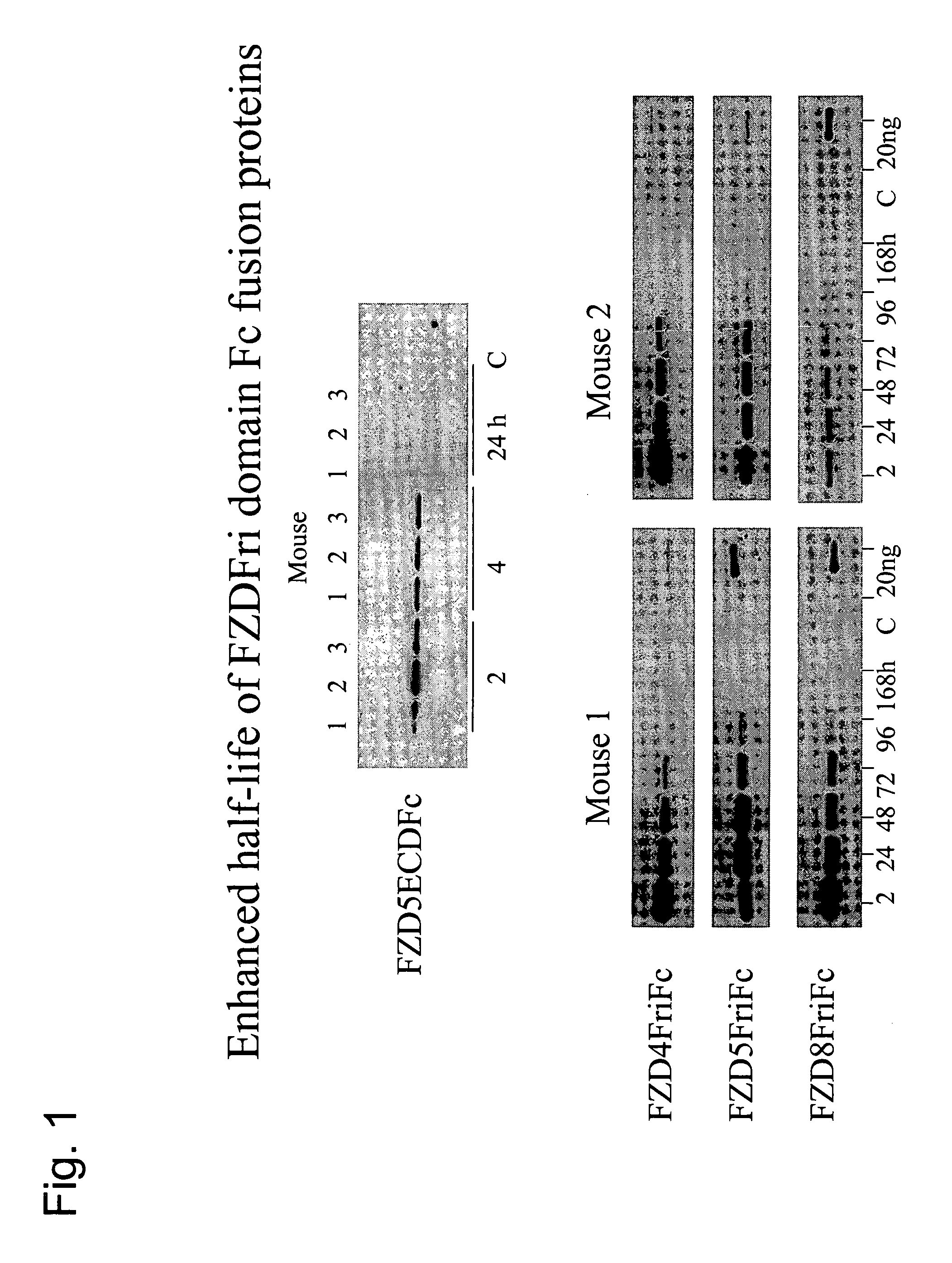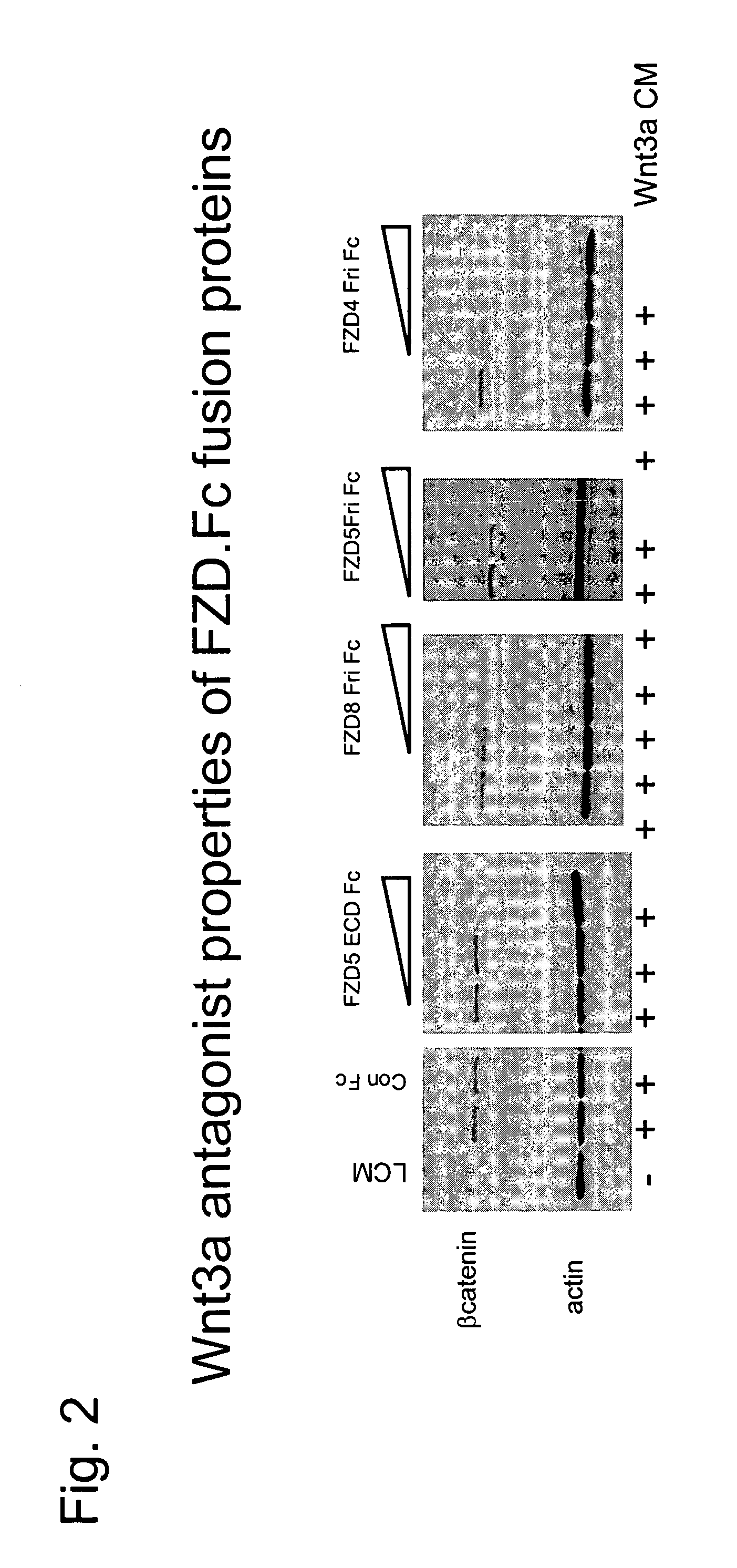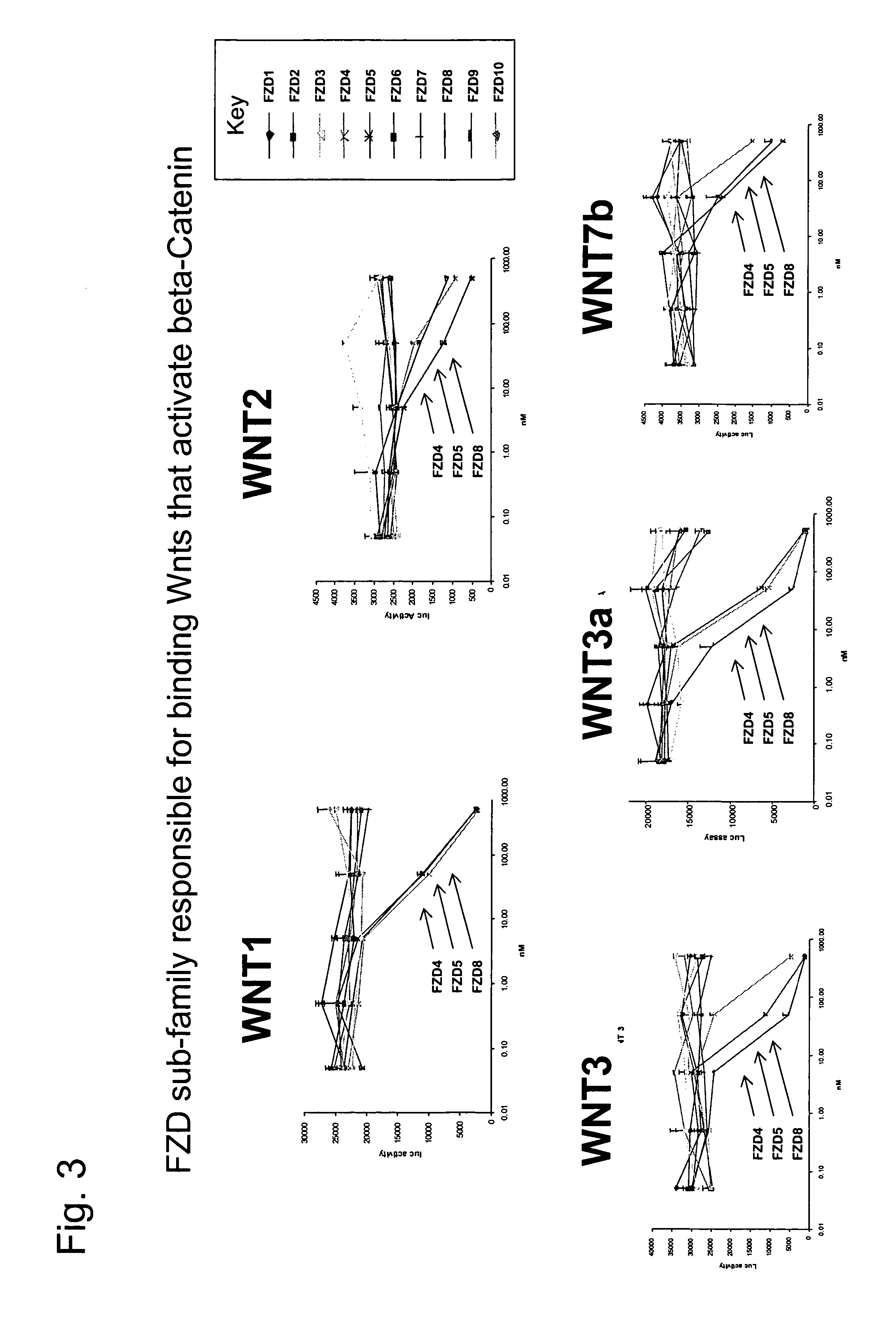Compositions and methods for inhibiting Wnt-dependent solid tumor cell growth
a technology of solid tumor cells and compounds, applied in the field of cancer, can solve the problems of breast cancer remaining an incurable disease, breast cancer is still a leading cause of death in middle-aged women, and mortality rates have decreased, so as to and inhibit the growth of tumor cells
- Summary
- Abstract
- Description
- Claims
- Application Information
AI Technical Summary
Benefits of technology
Problems solved by technology
Method used
Image
Examples
example 1
Production of FZD Fc Soluble Receptor Proteins and In Vivo Half-Life Determination
[0144]Soluble versions of the N-terminal extracellular domain (ECD) of human FZD receptors bind Wnt ligands and act as antagonists of Wnt pathway signaling (He et al., (1997) Science 275:1652-54; Tanaka et al., (1998) Proc. Natl. Acad. Sci. 95:10164-69; Holmen et al., (2002) JBC 277:34727-35; Vincan et al., (2005) Differentiation 73:142-53). Soluble FZD receptors were generated by ligating 1) the ECD or 2) the Fri domain of FZD10, FZD7, FZD5, FZD4, or FZD8 in-frame to human IgG1 Fc isolated from a human B-cell library (SEQ ID NO: 4) in a vector for expression in insect cells and HEK 293 cells. Standard recombinant DNA technology was used to isolate polynucleotides encoding FZD receptor ECDs including: amino acids from approximately 21 to 227 of FZD10 (FZD10 ECD.Fc); amino acids from approximately 32 to 255 of FZD7 (FZD7 ECD.Fc); amino acids from approximately 27 to 233 of FZD5 (FZD5 ECD.Fc); and amino ...
example 2
In Vitro Assays to Evaluate FZD Fc Soluble Receptor Protein
[0146]This example describes methods for in vitro assays to test the activity of FZD Fc receptor on cell proliferation and pathway activation.
[0147]The expression of a FZD receptor by different cancer cell lines is quantified using Taqman analysis. Cell lines identified as expressing a FZD receptor are plated at a density of 104 cell per well in 96-well tissue culture microplates and allowed to spread for 24 hours. Subsequently cells are cultured for an additional 12 hours in fresh DMEM with 2% FCS at which point soluble FZD Fc receptor protein versus control protein is added to the culture medium in the presence of 10 umol / L BrdU. Following BrdU labeling, the culture media is removed, and the cells fixed at room temperature for 30 min in ethanol and reacted for 90 min with peroxidase-conjugated monoclonal anti-BrdU antibody (clone BMG 6H8, Fab fragments). The substrate is developed in a solution containin...
example 3
In Vivo Prevention of Tumor Growth Using FZD Fc Soluble Receptor Protein
[0151]This example describes the use of a FZD Fc soluble receptor to prevent tumor growth in a xenograft model.
[0152]Tumor cells from a patient sample (solid tumor biopsy or pleural effusion) that have been passaged as a xenograft in mice were prepared for repassaging into experimental animals as described in detail above. Dissociated tumor cells (<10,000 cells per animal; n=10) were then injected subcutaneously into the mammary fat pads NOD / SCID mice to elicit tumor growth.
[0153]In certain embodiments, dissociated tumor cells are first sorted into tumorigenic and non-tumorigenic cells based on cell surface markers before injection into experimental animals. Specifically, tumor cells dissociated as described above are washed twice with Hepes buffered saline solution (HBSS) containing 2% heat-inactivated calf serum (HICS) and resuspended at 106 cells per 100 ul. Antibodies are added and the cells incubated for 20...
PUM
| Property | Measurement | Unit |
|---|---|---|
| volume | aaaaa | aaaaa |
| size | aaaaa | aaaaa |
| pharmaceutical composition | aaaaa | aaaaa |
Abstract
Description
Claims
Application Information
 Login to View More
Login to View More - R&D
- Intellectual Property
- Life Sciences
- Materials
- Tech Scout
- Unparalleled Data Quality
- Higher Quality Content
- 60% Fewer Hallucinations
Browse by: Latest US Patents, China's latest patents, Technical Efficacy Thesaurus, Application Domain, Technology Topic, Popular Technical Reports.
© 2025 PatSnap. All rights reserved.Legal|Privacy policy|Modern Slavery Act Transparency Statement|Sitemap|About US| Contact US: help@patsnap.com



